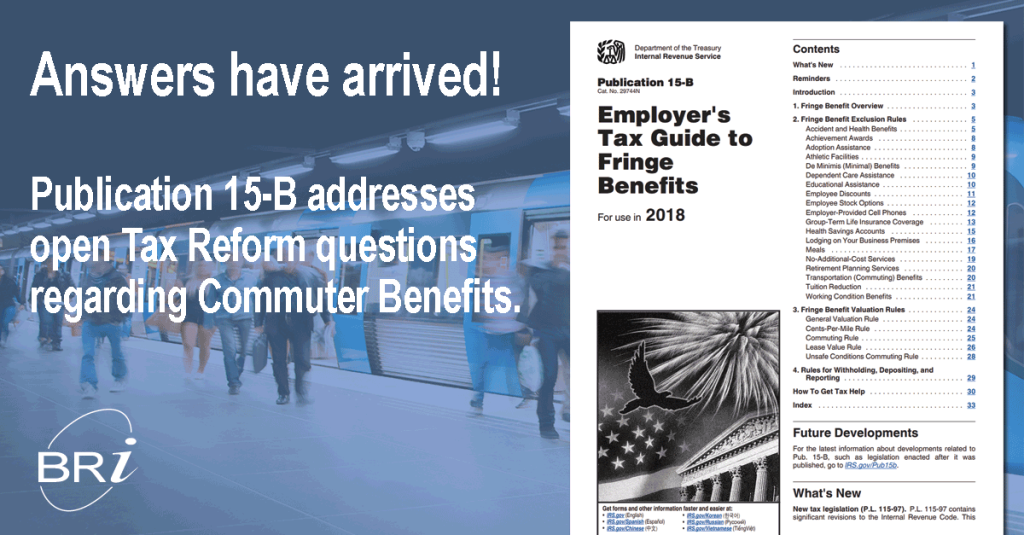Each year the IRS releases Publication 15-B, an Employer’s Tax Guide to Fringe Benefits. In recent years, there have been small adjustments to Publication 15-B but the annual release goes largely unnoticed. The passage of Tax Reform has however prompted some significant changes in 2018. Among other things, the 2018 release of Publication 15-B includes important information regarding changes to the tax treatment of commuter benefits and the suspension of qualified bicycle commute.
Tax Treatment of Commuter Benefits
What are the details?
The Tax Reform Bill eliminated the employer deduction for qualified transportation benefits. However, it maintained the pre-tax benefit for employees. This quickly led to questions regarding the employer’s tax treatment of employee pre-tax deductions for qualified transportation benefits. With Publication 15-B released, we now have answers.
Qualified transportation benefits can be provided either directly by employers or through a bona fide reimbursement arrangement. A bona fide reimbursement arrangement can also be used with a Compensation Reduction Agreement. A Compensation Reduction Agreement is a way to provide qualified transportation benefits on a pre-tax basis. Employees are offered a choice between cash compensation (AKA their pay) or a qualified transportation benefit. Publication 15-B clarified that the employer deduction for qualified transportation benefits is not available whether provided directly by the employer or through a Compensation Reduction Arrangement.
Great, so what does that mean?
Employees continue to receive the full tax savings for any pre-tax deductions for qualified transportation. There are however a few changes that occur from the employer perspective. First, employers must reduce their wage expense by the amount of the pre-tax employee deductions. The amount of the qualified transportation benefit is not eligible for deduction by the employer. The employer however continues to receive the payroll tax savings on the reduced payroll expense.
Gross business revenue = $100,000
Gross wage expense = $20,000
Employee Pre-tax Transit/Parking Deductions = $1,000
Adjusted wage expense = $19,000
Taxable revenue = $100,000 – $19,000 = $81,000
Employer pays taxes on $81,000 at 21% (previously 35%)
Employer saves 7.65% in FICA on $1,000 or $76.50.
Employee saves average of 30% on $1,000 or $300.
Suspension of Qualified Bicycle Commuting Reimbursements
What are the details?
Beginning January 1, 2018, employers must include the value of bicycle commuting reimbursements in an employee’s income. If employers continue to offer the benefit, it will be taxable to employees. This however may not be a permanent change as the suspension is currently only applicable for tax years 2018 through 2025.
So, is bicycle commute dead?
In short, no. In fact, there might be a bright side to it. As a taxable benefit, the restrictions that were in place for bicycle commute reimbursements are no longer applicable. Employers now have more freedom to design the program to meet their population’s needs. Some possible opportunities:
- Bicycle commute could be offered at the same time as commuter benefits.
- Employers could set a different monthly limit which better addresses the population’s expenses.
- Bike-share programs could be included as an eligible expense type.
Still have questions?
Check out the full details from Publication 15-B, the Employer’s Tax Guide to Fringe Benefits.



